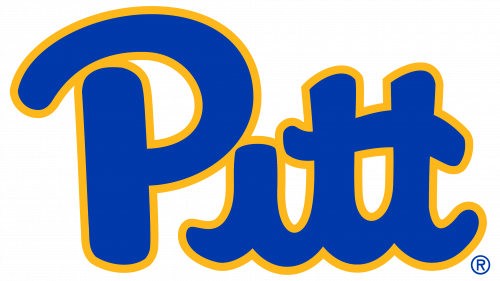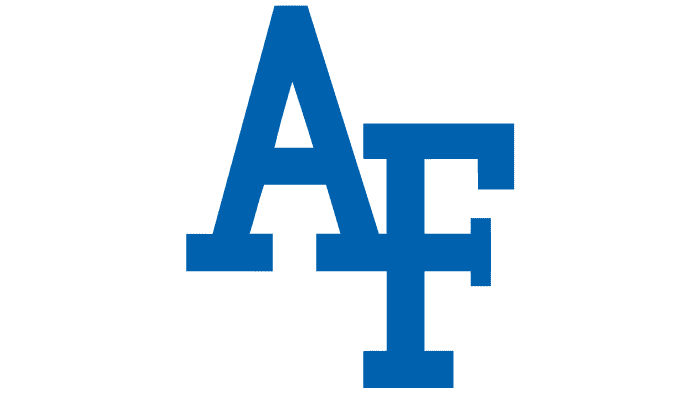The minimalist logo of the Pittsburgh Panthers does not contain extra details, thus symbolizing the team’s bravery and confidence. It strengthens the connection with the university and its community, emphasizing pride in belonging to this educational institution. The emblem is associated with strength, energy, and activity.
Pittsburgh Panthers: Brand overview
The University of Pittsburgh’s sports program began in 1869 when students started playing baseball. In 1889, they took up football, and in 1905 – basketball. The teams have a long history of branding. Until 1909, they were known as Wups, as the then-name of Pitt – Western University of Pennsylvania – was abbreviated to WUP. In November 1909, the educational institution adopted the panther as its mascot, considering the wild animal from the Pittsburgh region sufficiently formidable and noble to represent the athletes. Since then, they have been nicknamed the Panthers.
The University of Pittsburgh, known for its rich tradition in college sports, started its athletics journey in the late 1800s. Its football team kicked off in 1889 under coach Alf Hemmet. This early start laid the groundwork for a sports program filled with stories of triumph and excellence.
By 1908, the term “Pitt” became the favored nickname for the university’s sports teams, thanks to the creativity of cheerleaders and fans. A year later, the student newspaper’s art editor chose the Panther as the mascot, symbolizing the teams’ agility, power, and courage. This choice firmly established the Pitt Panthers’ identity.
In the early 20th century, coach Glenn “Pop” Warner led the football team to several national championships, solidifying their place in college football history. The basketball team, under coach “Doc” Carlson, also found great success, winning national championships in 1928 and 1930.
The football team enjoyed another golden era in the ’50s and ’60s under coach John Michelosen and clinched a national championship in 1976 with stars like Tony Dorsett under coach Johnny Majors.
Over the years, the Pitt Panthers have been a part of the Big East conference and, since 2013, the Atlantic Coast Conference (ACC), showcasing their prowess in various sports.
The university has produced notable alumni, including Dan Marino and Mike Ditka, highlighting its role in developing professional talent. Pittsburgh’s fans are known for their emotional support, especially at the Petersen Events Center, which is known for its electric atmosphere.
Although the team once had live panther mascots, they now have a costumed mascot named Roc, continuing the tradition in a new form.
Today, the Pitt Panthers are still a key player in Pittsburgh’s sports scene and collegiate sports in the U.S., maintaining a legacy of excellence and community pride.
Meaning and History
The Pittsburgh Panthers teams periodically change their logos to find the right visual image. However, they don’t always succeed: many symbols have been remembered by fans for the wrong reasons. The most controversial was the 1997 emblem, created under director Steve Pederson and unofficially nicknamed Dino Cat. It lasted until 2005, when a brief wordmark replaced it. In 2014, Pederson unexpectedly left his position and was succeeded by Scott Barnes. The new athletic director had to correct his predecessor’s mistakes. He decided to revive the so-called Pitt Script – a logo created in 1973 by order of then-football coach John Terrell Majors. Fans enthusiastically welcomed the return to old traditions.
What is the Pittsburgh Panthers?
The Pittsburgh Panthers are teams representing the University of Pittsburgh in the Atlantic Coast Conference and competing at the NCAA Division I level. According to CBS Sports, they are considered among the best in college sports. They have won numerous championships in football and basketball. Their official colors are gold and blue.
1947 – 1955
A dark blue panther creeps to the right as if about to attack an opponent. Its menacing snarl indicates readiness to fight to the victorious end. This nods to athletes who demonstrate their strength and bravery during competitions. The artists did not detail the silhouette but added white spots to highlight the claws, teeth, nose, eyes, and ears pressed to the head.
1955 – 1966
Now, the panther is turned forward and looks straight at the viewer. Its back and paws bulge with muscles, and its tail is raised and curved like a question mark. The animal’s eyes infernally glow yellow. The same color is used for numerous spots that cover the dark blue body and emphasize its disproportionality.
1966 – 1972
In the late 1960s, the logo featured the head of a roaring puma. It is designed in a simple cartoon style but is more detailed than the Panthers on previous emblems. The artists depicted fur near the ear, wrinkles on the nose, whiskers, and other small elements that make the drawing complete. Sharp fangs remind us that this is a dangerous predator. The top part of the head is orange; the bottom is white. Shadows and outlines are drawn in black, the tongue and nose are pink, and the eyes are brown.
1972 – 1974
The logo contains the university’s abbreviated name – Pitt. The largest is the yellow letter “P,” outlined in wide blue contours. The following “I” and two “T”s are very small and entirely blue. A yellow panther carefully steps over them. The glyphs have different serif shapes: the “P” has rectangular serifs, while the “I” and both “T”s have triangular ones.
1974 – 1987
The designers refined the emblem, harmonizing all the letters in color and shape. The inscription is in bold font with rectangular serifs and yellow with blue outlines. The animal’s tail has been elongated—its tip extends beyond the “P.”
1987 – 1997
This logo is known as Pitt Script. Its history dates back to 1973 when John Majors took the football coach position. Taking over a team that had lost many games, he decided to change its image. Majors started with the uniform, as the Pittsburgh Panthers’ dark blue and gold colors strongly resembled those of the Notre Dame Fighting Irish. The coach changed the shades to royal blue and mustard yellow. He also wanted a memorable emblem on the football helmets, similar to the “UCLA” inscription of the University of California, Los Angeles players. Thus, the wordmark “Pitt,” drawn by an unknown artist, was created.
1997 – 2005
In 1996, Steve Pederson became the athletic director. His tenure is remembered for creating a logo officially called “steel-cut Panther” but unofficially known as Dino Cat. This pixelated image of a roaring animal’s head resembles something between a dog and a Tyrannosaurus rex. White teeth and an eye stand out among the gold and blue spots. Below is an arched “Pittsburgh” inscription in capital letters with rectangular serifs and trimmed corners.
2005 – 2016
In 2005, the teams discarded Dino Cat for a concise wordmark with the inscription “Pitt.” All letters are uppercase, with dark blue and gold outlines and wide black shadows. They are arranged in an arc, which looks harmonious thanks to the capital font with rectangular serifs.
2016 – 2019
The new athletic director, Scott Barnes, once again made Pitt Script the primary logo of the Pittsburgh Panthers (previously, it was used only by the football team). The colors were changed to dark blue and old gold university-wide.
2019 – today
Nike Global Identity Group conducted a rebranding of the sports teams. The emblem was restored to the colors proposed by John Majors in the 1970s. The shape of the inscription remains unchanged: there is still no dot over the “i,” and a wavy line connects the two “t”s. As before, the letters are slightly tilted to the left.
Font and Colors
Pitt Script mimics a handwritten font, where each element has an individual shape. The initial “P” is in uppercase and separated from the main part of the inscription. The remaining letters are lowercase and connected.
The logo uses only two colors: royal blue and mustard yellow. They correspond to the university’s graphic traditions.
FAQ
When did Pitt change its logo?
In 2005, the University of Pittsburgh, known as Pitt, decided to replace its “DinoCat” logo, which had been introduced in 1997. This modern logo, blending dinosaur and panther features, didn’t connect well with fans or the university community. Following this, Pitt updated its logos and branding in 2016 and, notably, in 2019. The 2019 update marked a significant return to the traditional color scheme and logos predating the DinoCat, a change that received positive feedback for honoring the university’s rich history and heritage.
Although the DinoCat logo is officially retired, it’s still seen around campus, a nod to Pitt’s evolving brand identity. The 2019 revision, part of a larger effort to unify and reinforce the Pitt Panthers’ brand, focused on tradition and the legacy of Pitt athletics. This strategy aimed to enhance school spirit and align the athletic visuals with the university’s values and storied past.
What division is Pitt University?
The University of Pittsburgh, known as Pitt, is part of the NCAA Division I, the top tier of college athletics in the U.S. For football, it competes in the Division I Football Bowl Subdivision (FBS), indicating a very competitive level of play. Pitt fields 19 varsity teams across various sports, showing the university’s commitment to athletics.
Pitt is also a member of the Atlantic Coast Conference (ACC), renowned for its competitive edge and history of sports achievements. Being in the ACC means Pitt’s teams go up against some of the best in the nation, providing student-athletes with chances to excel in high-level competitions. This reflects Pitt’s dedication to a strong athletic program and underscores its role in the vibrant culture of college sports.
What sports does the University of Pittsburgh have?
The University of Pittsburgh, known for its strong presence in college sports, competes in NCAA Division I, the top level for college athletics. This allows students to excel in sports while focusing on their studies.
Pitt’s men’s sports include baseball, basketball, cross country, golf, soccer, and tennis. Each team aims for success and values teamwork, discipline, and sportsmanship. The men’s basketball team has a notable history and draws many fans, highlighting Pitt’s competitive spirit.
Pitt fields teams for women in basketball, bowling, cross country, soccer, softball, tennis, and volleyball. These teams allow women to compete at the highest college levels, encouraging sports excellence and personal growth. For example, the women’s volleyball team is known for its competitive edge and successes, showcasing Pitt’s support for women’s athletics.
Pitt’s sports programs enhance campus life, unite the university community, boost school spirit, and establish traditions. By offering a variety of sports, Pitt provides a platform for student-athletes of different backgrounds to succeed in their sports and academic pursuits.
How many national titles does Pitt have?
The University of Pittsburgh, with a proud history in athletics, boasts nine national football championships. This achievement ranks Pitt among the top football programs in the country, especially notable in the Eastern United States. With the sixth-highest national championships won by any major college program, Pitt’s football legacy is marked by historical excellence.
Pitt has also been a trailblazer in football, introducing innovations that have become standard. They were the first to have numbered jerseys, simplifying player identification during games. They pioneered travel logistics, too, being the first college team to fly to a game. Furthermore, Pitt was involved in the first football game broadcast on the radio, expanding the sport’s reach and popularity.
These contributions to football and their national titles underline Pitt’s substantial influence on the sport. The university’s nine national championships reflect its commitment to excellence, tradition, and innovation, making its football program a respected and storied part of collegiate sports history.
















